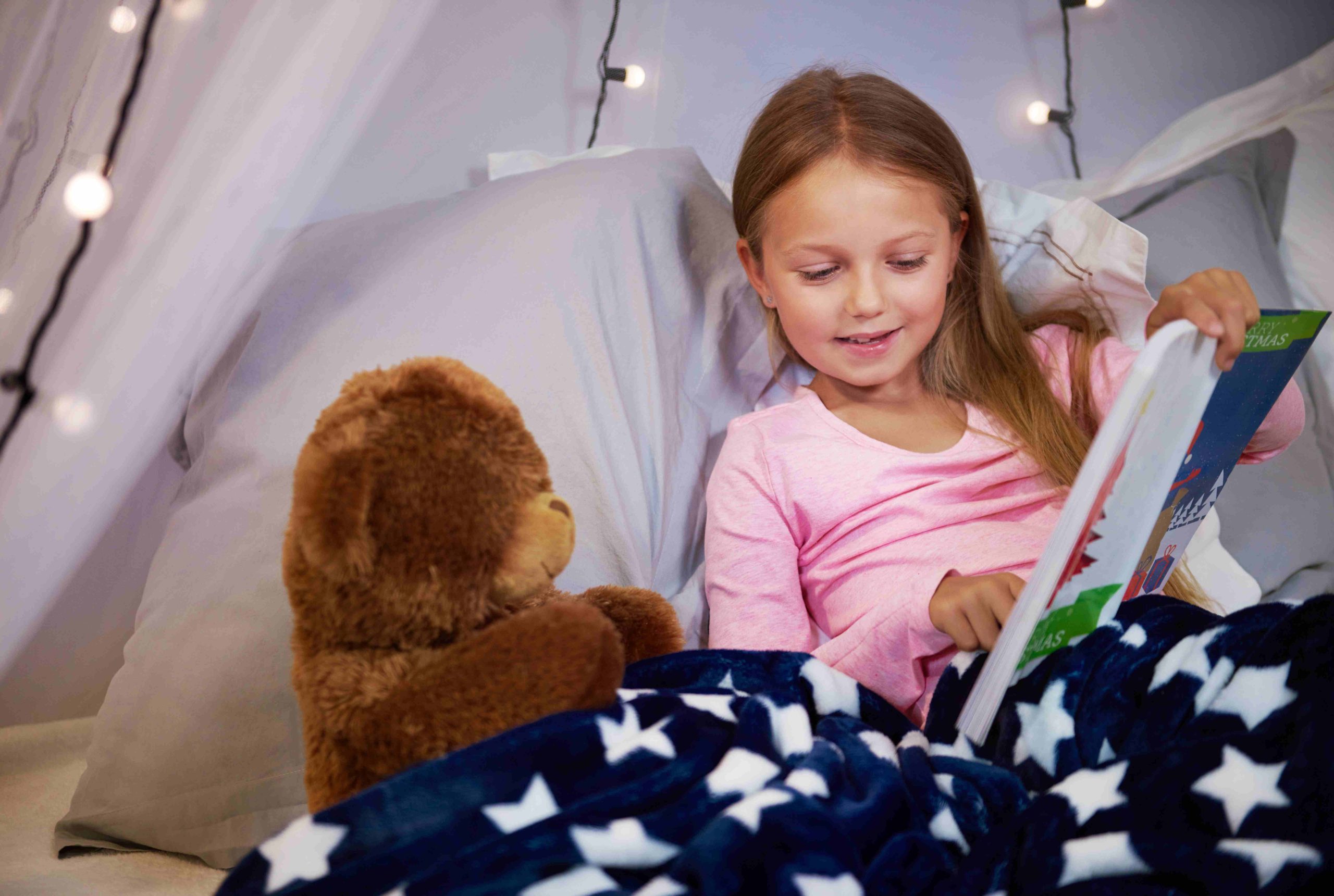
The Essential Preschooler Bedtime Routine: Creating a Nighttime Haven for Your Little Ones
As parents, we cherish the precious moments we spend with our preschoolers. From their infectious laughter to their boundless curiosity, every aspect of their growth and development is a source of joy and wonder. One vital aspect of their well-being that often goes unnoticed is their bedtime routine. Establishing a consistent and nurturing routine can have a profound impact on a preschooler’s overall health and happiness. In this article, we delve into the world of preschooler bedtime routines, exploring their significance and providing practical tips to create a calming nighttime haven for your little ones.
Setting the Stage: A Tranquil Sleep Environment
Creating a peaceful sleep environment is the first step in establishing an effective preschooler bedtime routine. A serene and welcoming bedroom can help your child transition from the hustle and bustle of the day to a restful state of mind. Consider the following:
a) Dim the Lights: Soft lighting promotes relaxation and signals to the brain that it’s time to wind down. Install a dimmer switch or use a bedside lamp with a low-wattage bulb to create a soothing atmosphere.
b) Comfort is Key: Choose a comfortable mattress and bedding appropriate for your preschooler’s age and preferences. Ensuring their physical comfort will aid in a more restful sleep.
c) Clutter-Free Zone: A tidy and organized bedroom can foster a sense of calm. Encourage your preschooler to participate in keeping their space clean and clutter-free.
A Consistent Schedule: The Rhythm of Nighttime Rituals
Establishing a regular and predictable schedule for bedtime is essential for preschoolers. Consistency provides a sense of security and helps their bodies and minds prepare for sleep. Consider the following elements for your preschooler’s bedtime routine:
a) Wind-Down Time: Begin the bedtime routine with activities that promote relaxation. This could include reading a book together, listening to calming music, or engaging in a quiet conversation about the day’s events.
b) Gentle Bathing: A warm bath before bed can be incredibly soothing. Encourage your preschooler to play with bath toys or use gentle scents like lavender to enhance relaxation.
c) Brushing and Pajama Time: Engage your preschooler in the process of brushing their teeth and changing into their favorite cozy pajamas. This establishes good oral hygiene habits and signals that bedtime is approaching.
Quality Time: Nurturing Bonds Through Bedtime Rituals
Bedtime routines offer an excellent opportunity for parents to connect with their preschoolers on a deeper level. These intimate moments foster emotional well-being and strengthen the parent-child bond. Consider incorporating the following rituals into your preschooler’s bedtime routine:
a) Bedtime Story: Reading a story together is a timeless tradition that sparks the imagination and cultivates a love for books. Choose age-appropriate stories that capture your preschooler’s interest and transport them to magical worlds.
b) Goodnight Rituals: Create personal rituals, such as singing a lullaby, sharing a special phrase or prayer, or giving gentle kisses goodnight. These rituals provide comfort and reassurance, helping your preschooler feel safe and loved.
c) Conversation and Reflection: Spend a few minutes talking with your preschooler about their day. Ask open-ended questions and actively listen to their thoughts and feelings. This simple act of connection strengthens your bond and helps alleviate any concerns or worries they may have.
Technology-Free Zone: The Importance of Unplugging
In today’s digital age, screens have become ubiquitous in our lives. However, it’s crucial to establish a technology-free zone during the bedtime routine. Electronic devices emit blue light, which disrupts the natural sleep-wake cycle and hinders the production of melatonin, the sleep hormone. Consider the following:
a) Establish Screen-Free Time: Aim to create a buffer zone of at least one hour before bedtime, where screens are off-limits. Encourage alternative activities such as coloring, puzzles, or engaging in imaginative play.
b) Electronic Curfew: Set a specific time when all electronic devices are turned off and stored away. This practice reinforces the importance of prioritizing sleep and allows your preschooler’s mind to unwind before bed.
Bedtime Challenges: Strategies for Common Sleep Issues
While every preschooler is unique, it’s not uncommon to encounter sleep challenges along the way. Here are some strategies to address common issues that may arise during bedtime:
a) Bedtime Resistance: If your preschooler protests bedtime, communicate openly and calmly about the importance of sleep. Use positive reinforcement, such as a star chart or a small reward for consistent adherence to the routine.
b) Nighttime Fears: Preschoolers often experience fears or nightmares. Create a safe space by providing a nightlight, a comforting toy, or reassuring them that you’re nearby and always available to provide comfort and reassurance.
c) Sleep Disruptions: If your preschooler experiences frequent waking during the night, investigate potential causes such as discomfort, hunger, or anxiety. Adjust the routine accordingly, ensuring their needs are met before sleep.
By implementing a consistent and nurturing preschooler bedtime routine, you create a nightly haven where your little one can unwind, feel loved, and recharge for the adventures of tomorrow. Each element of the routine plays a significant role in their overall well-being, from setting the stage with a tranquil sleep environment to nurturing bonds through bedtime rituals. Embrace the opportunity to connect with your preschooler, instill healthy sleep habits, and foster a sense of security that will benefit them for years to come.
The Power of Relaxation Techniques: Encouraging Calmness before Sleep
Preschoolers, like adults, can experience moments of restlessness or difficulty in transitioning from an active state to a peaceful slumber. Incorporating relaxation techniques into the bedtime routine can help alleviate anxiety and promote a sense of calmness. Consider the following strategies:
a) Deep Breathing Exercises: Teach your preschooler simple deep breathing exercises, such as inhaling deeply through the nose and exhaling slowly through the mouth. Encourage them to focus on their breath, helping them relax their bodies and clear their minds.
b) Progressive Muscle Relaxation: Guide your preschooler through a gentle muscle relaxation exercise. Start with the toes and gradually work up to the head, instructing them to tense and release each muscle group. This technique promotes physical relaxation and helps release any built-up tension.
c) Guided Imagery: Utilize the power of imagination by guiding your preschooler through a calming visualization. Create a peaceful scene, such as a serene beach or a cozy meadow, and encourage them to visualize themselves in that tranquil environment. This technique can transport their minds to a calm and peaceful state, facilitating the onset of sleep.
The Role of Nutrition: Fueling Quality Sleep
Proper nutrition plays a crucial role in a preschooler’s overall well-being, including their sleep quality. Paying attention to their dietary habits can significantly impact their ability to fall asleep and stay asleep throughout the night. Consider the following nutritional aspects:
a) Balanced Evening Meal: Ensure that your preschooler’s evening meal includes a balance of macronutrients, such as carbohydrates, proteins, and healthy fats. Avoid heavy, spicy, or sugary foods close to bedtime, as they can disrupt sleep.
b) Hydration Habits: Encourage your preschooler to drink an adequate amount of water throughout the day, but limit their intake close to bedtime to avoid frequent trips to the bathroom. Hydrated bodies are more conducive to restful sleep.
c) Snack Smartly: If your preschooler requires a bedtime snack, opt for light and nutritious options. Some suitable choices include a small piece of fruit, a handful of nuts, or a small serving of yogurt. These snacks provide essential nutrients without causing digestive discomfort or energy spikes before bed.
Creating a Personalized Bedtime Routine: Tailoring to Your Preschooler’s Needs
Every preschooler is unique, and what works for one child may not work for another. It’s essential to observe and adapt the bedtime routine to suit your preschooler’s individual needs and preferences. Consider the following factors:
a) Sleep Duration: Pay attention to your preschooler’s sleep duration needs. While most preschoolers require around 10-12 hours of sleep, individual variations may exist. Observe their energy levels and behavior during the day to determine if adjustments to the routine are necessary.
b) Sensory Preferences: Some preschoolers may have sensory sensitivities that can affect their sleep. Take note of their reactions to different sensory stimuli, such as certain fabrics, lighting conditions, or sounds. Make adjustments to the sleep environment to create a sensory-friendly atmosphere.
c) Flexibility and Adaptability: Be open to making adjustments to the bedtime routine as your preschooler grows and develops. Their needs and preferences will evolve over time, so stay attuned to any changes and be willing to modify the routine accordingly.
Troubleshooting Bedtime Challenges: Consistency and Patience
Despite our best efforts, bedtime challenges may still arise. It’s essential to approach these obstacles with consistency, patience, and a willingness to adapt. Consider the following strategies for troubleshooting common issues:
a) Gradual Adjustments: If you need to make changes to the bedtime routine, do so gradually. Sudden and drastic changes can cause resistance and disrupt sleep patterns. Slowly introduce new elements or adjust timings, allowing your preschooler to adapt at their own pace.
b) Positive Reinforcement: Acknowledge and praise your preschooler’s efforts to adhere to the bedtime routine. Celebrate their successes and provide small rewards or incentives to motivate them. Positive reinforcement can help overcome resistance and make the routine more enjoyable.
c) Seek Professional Guidance: If bedtime challenges persist or become severe, consider seeking guidance from a pediatric sleep specialist or a healthcare professional. They can offer tailored advice and strategies to address specific issues your preschooler may be facing.
The Long-Term Benefits: Setting the Stage for Lifelong Sleep Habits
Investing time and effort into establishing a healthy preschooler bedtime routine yields long-term benefits that extend far beyond childhood. By teaching your child the value of quality sleep and providing them with a nurturing sleep environment, you set the stage for lifelong sleep habits. These habits contribute to their overall physical and mental well-being as they grow into adolescence and adulthood.
Incorporating a consistent bedtime routine during the preschool years helps children develop a healthy relationship with sleep. They learn to associate sleep with feelings of comfort, security, and relaxation. Moreover, the emotional connection and bonding established during the bedtime routine lay the foundation for positive parent-child relationships and open lines of communication.
By prioritizing the preschooler bedtime routine, you are nurturing their overall development and ensuring they have the necessary tools for a lifetime of healthy sleep habits.
Embrace the Journey: An Ongoing Commitment
Establishing and maintaining a preschooler bedtime routine is an ongoing commitment that requires dedication and patience. As your child grows, their needs and preferences may change, and adjustments to the routine may be necessary. Embrace this journey as an opportunity to connect with your child, nurture their well-being, and provide them with a haven for restful sleep each night.
Incorporating the elements discussed in this article – from creating a tranquil sleep environment to incorporating relaxation techniques and addressing nutritional needs – will help you create a nurturing and effective preschooler bedtime routine. Embrace the uniqueness of your child, observe their individual needs, and adapt the routine to suit their development. Through this journey, you will not only provide them with a solid foundation for healthy sleep but also create lasting memories and strengthen your bond as a family.
Celebrating Progress: Small Steps, Big Achievements
As you embark on establishing and refining your preschooler’s bedtime routine, remember to celebrate even the smallest steps and accomplishments along the way. Each night that your child peacefully drifts off to sleep is a testament to the effort and love you’ve poured into creating a bedtime haven for them. Embrace the joy of witnessing their growth and development, both in their sleep habits and in their overall well-being.
Take pride in the moments of connection and bonding that occur during the bedtime routine. Cherish the shared laughter, the whispered secrets, and the sweet lullabies. These precious moments create lasting memories that your preschooler will carry with them throughout their lives.
As you navigate the challenges that may arise, remember that consistency and patience are key. Bedtime routines may evolve over time, but the underlying principles of creating a tranquil environment, fostering emotional connection, and prioritizing healthy sleep habits remain constant.
In conclusion, the preschooler bedtime routine is a powerful tool that can positively impact your child’s physical, mental, and emotional well-being. By setting the stage for quality sleep, nurturing bonds, and addressing challenges with flexibility and compassion, you provide your preschooler with a solid foundation for a lifetime of healthy sleep habits.
Embrace this journey as a continuous commitment, and remember to celebrate the progress, no matter how small. Through your unwavering dedication, love, and the creation of a peaceful bedtime routine, you are shaping not only your child’s sleep but also their overall development. So, tuck them in, kiss them goodnight, and embark on this beautiful journey of creating a nighttime haven for your precious preschooler.


